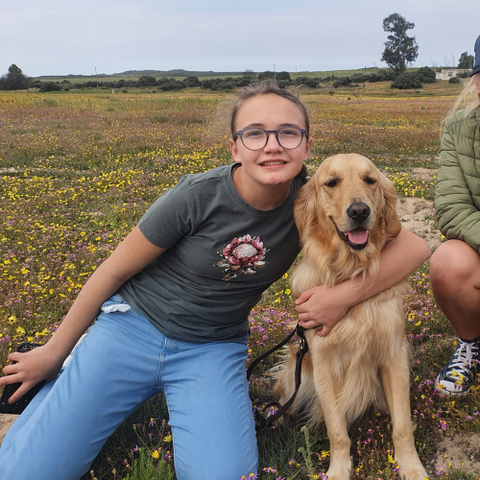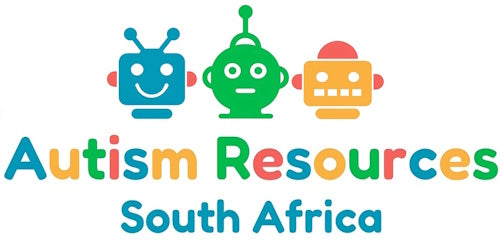Autism and the bond with animals
Jaco de GoedeA few years ago, I watched a video by Dr Tony Attwood where he talked about the unique relationship between autistic children and animals. The example he used was a young autistic girl he called the “chicken whisperer.” Temple Grandin, who can probably be called the original “autistic animal whisperer,“ has also spoken often about how she has more of an affinity for animals than humans.
Over the course of the past 10 years, we have owned at least 15 pets, including dogs, birds, hamsters, guinea pigs and pet rats. At the moment, we own only 3 dogs and 2 horses, which is rather below average for our family. If the kids had their way, we’d also have some chickens and at least 2 cats.

So, why is there such an affinity between autistic kids and animals? Do animals make a difference in their lives? According to Psychology Today, children on the spectrum have been found to show particular interest in animal stimuli. They show greater attention to eye regions of animal faces versus human ones and exhibit greater activation in social reward and emotional arousal areas of the brain in response to animal versus human stimuli. In an analysis of scientific studies, they found that:
- Being in the presence of an animal has been found to reduce social anxiety in children and adults on the autism spectrum.
- When an animal was present, children on the autism spectrum experienced increased social skills, suggesting a reduction in social anxiety in the presence of an animal.
- Some studies found an association between the presence of a service dog at home and increased social reciprocity as well as lowered frequency of externalizing behaviors.
- The social communication and decreases in arousal that result from interacting with animals may be associated with increases in oxytocin - increases in levels of oxytocin have been associated with increases in social interaction and accompanying increases in eye contact and empathy. In addition, increases in levels of oxytocin have been associated with an enhanced response to stress, including a reduction in blood pressure and heart rate.

However, in the article it is noted that the research suggests that engaging with animals benefits children on the autism spectrum in supporting their social communication and coping with anxiety, the current research volume is not sufficient for pet ownership to be short-listed as a best-practice intervention for young persons on the autism spectrum.
Also, the 2013 study, Social behaviors increase in children with autism in the presence of animals compared to toys, found that:
“Participants with ASD demonstrated more social approach behaviors (including talking, looking at faces, and making tactile contact) and received more social approaches from their peers in the presence of animals compared to toys. They also displayed more prosocial behaviors and positive affect (i.e., smiling and laughing) as well as less self-focused behaviors and negative affect (i.e., frowning, crying, and whining) in the presence of animals compared to toys.”
According to AutismWorks, animals bring a sense of peace and calmness to a child or even adult on the spectrum. They mention a few reasons why a person with autism may feel very connected to animals:
- Communication
This is huge. Animals cannot communicate in words, and many children with autism are still working on this. Even those that can communicate still have challenges, and animals just give them a sense of comfort. Animals are great to spend time with because they are predictable (except for puppies and kittens!) in their demeanour and movements. Domesticated animals, such as older dogs and cats may be ideal for your child with autism, as they are calm and oh, so loving!

- Unconditional Love
Animals will never, ever critique or judge their human friends. Individuals on the spectrum seemingly understand this, as they tend to feel very calm and at peace with their pets. An older dog may just sleep on the bed while the child is watching YouTube videos for hours on end, and even though they may not interact, there is a sense of “someone” being in the room giving that child a sense of security and real companionship.
- Therapy
Many early intervention strategies include animal-assisted therapy. The author mentions when her nonverbal three year old would go to animal-assisted therapy each week, and actually ride llamas. He would also ride in a large wagon with a bunny, and occasionally try to talk to it and pet it. Animal-assisted therapy can really open those doors of not only communication, but also sensory development.
- Yes, Stuffed Animals Work!
If getting a pet is just not feasible, you can take him the kids a petting zoo or to a friend’s house that has a trusting, loving dog. But, what also may work is the use of stuffed animals, especially one your child is fond of. Oftentimes, children with autism have one thing they are “obsessive” over, and if it is an animal, then perhaps the stuffed version would help. Not only are stuffed animals great for sensory stimulation, but they are very effective in helping you and your loved one practice those much-needed social skills.
Animal Assisted Therapy
Animal-assisted therapy is a therapeutic intervention that incorporates animals, such as horses, dogs, cats, and birds, into the treatment plan. The client, therapist, and animal work together in therapeutic activities that are outlined in a treatment plan, with clear goals for change, measurable objectives, and the expectation of identifiable progress toward the treatment goals. The therapy can take many forms, based on the patient, the animal, and the goals for treatment.
The Human-Animal Bond Research Institute states that Animal-assisted therapy has been found to increase socialization in children with ASD. They speculate that the readiness for many animals to react affectionately to attention make them uniquely suitable to be ‘emotional bridges’ in therapeutic contexts. One study found that, following the introduction of a therapy dog into a therapeutic session, seriously withdrawn children with ASD showed a sharp increase in both verbal and nonverbal communication, directed both at the therapy dog and the therapist. Furthermore, a study that incorporated therapy dogs in a social skills intervention for children with high functioning autism found that children who interacted with a therapy dog showed decreased feelings of isolation and overall depressive symptoms, in addition to increased socialization.
According to the Adult Ability Centre for Lifelong Learning, animal assisted therapy can come in a variety of forms, including service animals, therapy animals, family pets, emotional support animals, and hippotherapy (also known equestrian therapy).
- Service Dogs for Autism
Service animals are professionally trained and certified to meet their owners’ unique needs. Legally allowed in any public place, a service animal provides a secure companion for a person with autism as they travel, visit the dentist or doctor, attend school activities, or other stressful situations. They can be trained to curb meltdowns, aggression, or self-harm, and can even provide protection for people with ASD who might wander off into danger. These services animals are generally dogs, but not in all cases.

- Therapy Animals
Therapy animals offer comfort through medical procedures and physical or occupational therapy. They also promote emotional and intellectual openness and communication in therapy sessions. Typically used in healthcare facilities, such as hospitals, therapy animals are not legally required access to all public places.
- Family Pets
Family pets provide unconditional, affectionate companionship for a person with autism. Caring for a pet supports practical skills, responsibility, and empathy. Walking a dog or other pet also provides physical exercise.
- Hippotherapy or Equestrian Therapy
Hippotherapy or equestrian therapy is the riding and caring for horses. This type of animal therapy boosts social, emotional, and intellectual skills. Guiding a horse requires an individual to carefully think through how to communicate their desires, which is a significant skill for people with autism. Horseback riding also promotes physical strength and improves the low muscle tone.

Leanne O. Nieforth, Ph.D., who researches human-animal interactions at University of Arizona’s College of Veterinary Medicine. lists the benefits of animal-assisted interventions, which include:
- Hippotherapy ─an occupational, physical, or speech therapist uses the movement of a horse to help engage patients’ sensory, neuromuscular, or brain systems to improve their strength, balance, coordination, or language.
- Therapeutic or adaptive horseback riding ─ a riding instructor adapts recreational lessons for people with various conditions.
“We have lots of anecdotal information about how animal-assisted interventions work for people, but a lot of time, people say, ‘It’s magic, it just works!’ Putting the hard data and hard science behind that is my goal as a researcher. I think most researchers would agree with that,” Nieforth says. She discusses her research on animal interventions in this recorded SPARK webinar.
Another webinar that you can watch is this one, where Gray Atherton, Ph.D., discusses pet ownership as it relates to autistic individuals.
In our experience, the presence of a pet is a source of non-judgment and unconditional love. Our kids often find it easier and less stressful to interact with animals as being in the presence of an animal doesn’t require navigating complex implicit social conventions and the reading of complex intentions.
But, as stated in the Psychology Today article, while families of children on the autism spectrum are encouraged to consider the benefits of interacting with an animal for their children, they are also encouraged to think about the unique characteristics of their family such as their current time and financial resources, their current levels of stress, and the unique sensory makeup of their family members, in considering whether adopting a pet is a viable option for their family.
Remember who will be the one ultimately tasking care of the pets – mom, of course! And taking care of guinea pigs is not fun.

